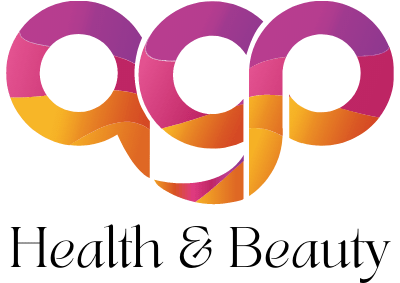List of Common Muscle relaxant drugs, types, and uses.

Muscle relaxant drugs are commonly prescribed medications used to diminish muscle spasms, which can be caused by a spine injury like whiplash, fibromyalgia, or low back strain. These spasms can cause extreme discomfort and limit your movement. Taking muscle relaxants can help reduce pain and increase mobility.
Your physician may suggest taking a muscle relaxant medication to reduce muscle spasms, lessen the pain, and improve the mobility of your muscles. It is easier to implement other treatments like physical therapy, stretching, and exercises when your muscles are relaxed and flexible.
Table of contents
What are Muscle relaxant drugs?
Muscle relaxants are not all the same, as they vary in chemical composition and how they work in the brain. This is why it’s important to always consult with your doctor or specialist before taking any medication for muscle pain relief. Medications referred to as muscle relaxers act on the central nervous system and help induce the relaxation of muscles. They have sedative properties and result in a calming effect on the entire body.
Muscle relaxers are mostly recommended for short-term use to help with sudden, painful musculoskeletal conditions. In some cases, these medications can also be employed to manage chronic pain (lasting more than 3 months).
How are Muscle relaxant drugs Helpful?
muscle relaxant drugs are often prescribed along with rest, physical therapy, and other measures to reduce the pain experienced. These medications can help alleviate the discomfort felt due to muscle spasms or injuries.

Muscle relaxants can provide relief to those suffering from two ailments:
Spasticity: Spasticity is a permanent muscle tightness and stiffness in the body that is by an injury to the brain or spinal cord. It can be very limiting and impair one’s quality of life.
Spasms: Spasms are not very common and arise due to some kind of musculoskeletal problem. During the early stages of back pain, it is quite common for spasms to occur although it is only temporary.
What are the types of Muscle relaxant drugs?
Muscle relaxant drugs available by prescription can be categorized into two main groups.
- Antispasmodics are beneficial for relieving occasional muscle tightness and discomfort caused by spasms.
- Antispastics are primarily to control spasticity, which is a symptom of neurological conditions like cerebral palsy or spinal cord injury. The medication helps alleviate the muscular tightness and spasms associated with these disorders.
Muscle relaxant drugs for Muscle Spasms
These Muscle spasms are highly uncomfortable and can prevent you from doing your usual tasks. Furthermore, the tightness & pain associated with it may lead to difficulty in getting a good night’s rest.
Here are some common antispasmodic medicines (with a generic label first and a brand name as an example in parentheses).
Carisoprodol (Soma)
Carisoprodol is a medication that helps adults & teens 16 and above relax their muscles. It is available in tablet form in dosages of 250-350 mg. One should be aware that it can be habit-forming and should only be used for two to three weeks.
Chlorzoxazone (Lorzone, Parafon Forte DSC, Remular-S)
Chlorzoxazone is a powerful muscle relaxant drug for treating severe muscle strains and spasms, especially in the back. It comes in tablet form and the normal dosage recommendation for adults is 500 mg taken three or four times daily. Also, an unusual side effect of this medication is that it can cause your urine to become discolored with a reddish or purple hue. The way your body processes the drug is the reason for this, so there’s no need to worry.
Cyclobenzaprine (Amrix)
Cyclobenzaprine is a potent muscle relaxant that is available in the form of tablets, suspensions, and extended-release capsules. People with certain heart conditions, including heart failure, recent heart attack, or arrhythmia should not use this medication.
Metaxalone (Skelaxin)
It is a central nervous system muscle relaxant drugs that can be orally, typically in 800 mg doses three to four times a day. Metaxalone cause drowsiness, irritation, and GI issues which are the most common side effects. But it also carries a broad range of unusual adverse effects which have details from the Mayo Clinic.
Methocarbamol (Robaxin)
Methocarbamol is a centrally-acting skeletal muscle relaxant, similar to other medications in this category. Generally, a total of 1500mg is to prescribe daily. Therefore, this can be 3 tablets (500mg each) or 2 tablets (750mg each). It is important to be mindful of the side effects associates this muscle relaxant and any other medication you are taking, as indicated by your doctor. Make sure to take them only when prescribed.
Orphenadrine (Norflex)
Orphenadrine is a multi-functional drug, as it has a muscle relaxant property and also acts as an anticholinergic agent, which means it impedes the activity of the acetylcholine neurotransmitter. To manage the tremors seen with Parkinson’s disease, a typically prescribed dose of orphenadrine is 200mg – 250mg, divided into two to three intakes a day. This is mainly because of its anticholinergic properties.
Muscle relaxant drugs: Antispastics

Antispasmodics are commonly if the origin of muscle spasticity is a neurological condition like a spinal cord injury. Nevertheless, these medications are usually not good in cases of occasional and mild muscular spasms.
Baclofen (Ozobax)
Baclofen is in use to treat chronic neurological conditions leading to spasticity, like multiple sclerosis & spinal cord injuries. Prior medication on this list—antispasmodics—is recommended for acute episodes of muscle spasms.
Tizanidine (Zaniflex)
This muscle relaxant drugs treat spasms triggers Multiple Sclerosis, an autoimmune disorder that attacks the protective layer of myelin on parts of nerve cells (which is closely in relation to Transverse Myelitis).
Takeaway
Research regarding the effectiveness of muscle relaxant drugs is in limit, thus making it difficult to decide which one to go for. Hence, it is essential to consult your doctor before taking any such medications. Medication choices depend on personal factors, abuse potential, drug interactions, and side effects.
Medication is only a small piece of the puzzle of relieving pain. Also, it’s one aspect, typically for a brief period, and in combination with rest, stretching, physical therapy, and exercise for the best results.
Products That We Suggest for you
Deer Antler Plus – Muscle Building & Recovering
Supports muscular strength and endurance. The deer are already here. MLB Players have using Deer Antler as an alternative to steroids for years as they say it boasts similar effects to banned substances but doesn’t pose any of the health risks.
To know more and purchase, Click Here
POWERUPP – Body Building & Testosterone Booster
PowerUpp is an extraordinarily potent supplement that will skyrocket your testosterone levels to new heights. Therefore, we’re talking about huge gains here. We’re talking about superhuman strength, power, and endurance here. In a method that is both sustainable and nutritious, as well as absurdly fast.
To know more and purchase, Click Here








Comment to this Article
Comments that encourage respectful conversation are welcomed at AGP Health n Beauty. Stay on subject, please. Comments that are aggressively promotional of goods or services or that include personal attacks, vulgar language, or other forms of abuse will be deleted. Which remarks break our comment policy will be decided at our discretion. (Anonymous comments are accepted; just leave out your name in the comment box. Although necessary, your email address won't be posted with your comment.)